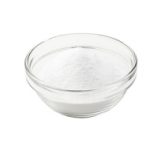Back in the 1960’s, obesity wasn’t much of a concern. It wasn’t even really an issue. After all, only a small portion of U.S. adults – about 13 out of every hundred – were dealing with extreme weight issues.
Today it’s an entirely different story. Around 43 out of every hundred adults are obese. Add on the number of people who are overweight, and it turns out that nearly 74% of American adults are struggling with their weight!
While there are a lot of factors involved in the obesity epidemic, one of the most important factors might just be the widespread availability (and yum factor!) of foods that have a high fructose content.
At least, that’s what a new Obesity study suggests. And I have no reason to disagree.
It’s something called “the fructose survival hypothesis.” It isn’t very difficult to understand.
In a nutshell, when animals are expecting a famine, they will gorge on high-fructose foods to fatten them up beforehand. And when push comes to shove, we humans are still part of the animal species. So this concept is built into our genes.
But it was never meant to be a day-to-day thing. Unlike our grandparents, and even our parents, we chronically consume these foods. When we do that, it shuts down our ability to lose weight and shifts our metabolism toward unhealthy outcomes.
That’s because chronic fructose consumption reduces levels of adenosine triphosphate (ATP) in your body.
Since ATP is responsible for providing energy to all of your body’s cellular processes, a big drop in levels will tell your body it needs more energy. That it needs more fuel. This makes you hungry, and you end up eating more.
In other words, your body actually has enough energy on hand, but can’t tap into it. So you keep eating and eating, building up more and more energy reserves that can’t be accessed, and that packs on the pounds.
And it’s not just the weight you have to worry about.
Health Consequences of High Fructose Foods
Among other things, eating too much fructose damages your arteries, increases triglycerides and raises inflammatory markers linked to heart problems. It also fills your bloodstream with oxidized LDL particles. These are the type of LDL that slip into your arteries and cause plaque buildup.
So it’s no wonder fructose is associated with a higher risk of heart disease, stroke and higher cardiovascular death rates!
And guess what?
Today’s epidemic of non-alcoholic fatty liver disease (NAFLD) is coming directly from all of the sugary foods and beverages people are consuming. In fact, fructose is often pointed out as one of the worst liver threats today. That’s because it stops the liver’s ability to absorb fat. Glucose doesn’t do that. Only fructose.
Just consider this: Alcohol has been linked to liver problems for centuries. But NAFLD was so uncommon that it wasn’t even given a name until 1980. Coincidentally high fructose corn syrup was introduced to the food and beverage industry in the 1970s.
At the same time, excess weight contributes to all of these health concerns. So while eating a high fructose diet leads to excessive weight gain, that extra weight compounds all of the health problems associated with high fructose intake.
Let’s get Fructose out of Your Diet
In the early 1900s, fructose was a very small part of our diet. Americans only consumed about 16 grams of fructose per day, and that came mostly from whole plant sources; fruits and vegetables.
In other words, it was in its natural, unprocessed state. So the plant fibers slowed down the body’s absorption of the sugars.
You see, when you bite into a fresh fruit, you’re eating a synergistically nutritious whole food. All of the elements – the vitamins, minerals, water, antioxidants and other nutrients – work together to provide a profound health benefit.
Plus, fruit comes with all-important fiber. This slows down digestion of the fructose so that you don’t end up getting wildly high spikes of blood glucose and insulin.
This is why fructose is often referred to as “fruit sugar.”
Jumping ahead to today, we consume four or five times that amount in the form of processed fructose. It’s found in breakfast cereals, pastries, sodas, fruit drinks and all kinds of other foods. And it’s wrecking our health.
When you eat a food with processed fructose in it, you get an entirely different response. The food itself generally has no nutritional value. No fiber. Nothing at all to offset the fructose load.
So make sure to read labels. Watch out for terms like corn syrup, fructose, high fructose corn syrup, natural sugars, and agave syrup or nectar.
When you do want to add some sweetness to foods or beverages, I would stick with natural options. Organic, pure cane sugar is definitely better than fructose or artificial sweeteners. Organic honey, monk fruit extract and date sugar are other options. And there’s always stevia.
SOURCES:
Fryar CD, Carroll MD, Afful J. Prevalence of overweight, obesity, and severe obesity among adults aged 20 and over: United States, 1960–1962 through 2017–2018. NCHS Health E-Stats. 2020.
Obesity and Overweight. Centers for Disease Control and Prevention. Last Reviewed: January 5, 2023.
Johnson RJ, Lanaspa MA, Sanchez-Lozada LG, Tolan D, Nakagawa T, Ishimoto T, Andres-Hernando A, Rodriguez-Iturbe B, Stenvinkel P. The fructose survival hypothesis for obesity. Philos Trans R Soc Lond B Biol Sci. 2023 Sep 11;378(1885):20220230.
Abundance of fructose not good for the liver, heart. Harvard Health Publishing: Harvard Heart Letter. Sept 2011.
DiNicolantonio JJ, Lucan SC, O’Keefe JH. The Evidence for Saturated Fat and for Sugar Related to Coronary Heart Disease. Prog Cardiovasc Dis. 2016 Mar-Apr;58(5):464-72.
Kelly RK, Tong TYN, Watling CZ, Reynolds A, Piernas C, Schmidt JA, Papier K, Carter JL, Key TJ, Perez-Cornago A. Associations between types and sources of dietary carbohydrates and cardiovascular disease risk: a prospective cohort study of UK Biobank participants. BMC Med. 2023 Feb 14;21(1):34.
Jensen T, Abdelmalek MF, Sullivan S, Nadeau KJ, Green M, Roncal C, Nakagawa T, Kuwabara M, Sato Y, Kang DH, Tolan DR, Sanchez-Lozada LG, Rosen HR, Lanaspa MA, Diehl AM, Johnson RJ. Fructose and sugar: A major mediator of non-alcoholic fatty liver disease. J Hepatol. 2018 May;68(5):1063-1075.






